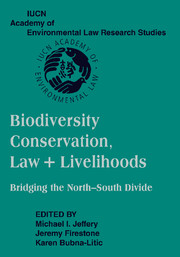 Biodiversity Conservation, Law and Livelihoods: Bridging the North-South Divide
Biodiversity Conservation, Law and Livelihoods: Bridging the North-South Divide Published online by Cambridge University Press: 31 July 2009
INTRODUCTION
Since the early 1990s, China has actively been involved in the international effort to address climate change. It has ratified the United Nations Framework Convention on Climate Change (UNFCCC) and the Kyoto Protocol, and focused on how to integrate climate issue with development objectives. Although historically China accounted for only a relatively low percentage (7.3 percent from 1850 to 2000) of globally cumulative greenhouse gas (GHG) emissions, it has increased its share in the last decade to 14.8 percent in 2003. China is, at the beginning of the twenty-first century, the second largest emitter in absolute terms, where GDP and population are decisive determinants.
In sharp contrast with these enormous overall amounts, China's GHG emissions, in per capita terms, depicts a different picture. China only ranks ninety-seventh globally, just slightly higher than the average of developing countries. China could argue that these figures might be deceptive because the cross-country difference in rank may be large but the absolute difference may be rather small, if one compares the U.S. 6.6 tons carbon equivalent per capita to the 1.1 tons of China.
There is also another indicator that China uses to defend itself when asked during international negotiations to take some sort of responsibility to curtail GHG emissions and that is carbon intensity, which is the level of CO2 emissions per unit of economic output.
To save this book to your Kindle, first ensure [email protected] is added to your Approved Personal Document E-mail List under your Personal Document Settings on the Manage Your Content and Devices page of your Amazon account. Then enter the ‘name’ part of your Kindle email address below. Find out more about saving to your Kindle.
Note you can select to save to either the @free.kindle.com or @kindle.com variations. ‘@free.kindle.com’ emails are free but can only be saved to your device when it is connected to wi-fi. ‘@kindle.com’ emails can be delivered even when you are not connected to wi-fi, but note that service fees apply.
Find out more about the Kindle Personal Document Service.
To save content items to your account, please confirm that you agree to abide by our usage policies. If this is the first time you use this feature, you will be asked to authorise Cambridge Core to connect with your account. Find out more about saving content to Dropbox.
To save content items to your account, please confirm that you agree to abide by our usage policies. If this is the first time you use this feature, you will be asked to authorise Cambridge Core to connect with your account. Find out more about saving content to Google Drive.